What is Malabar Spinach?
Often mistaken for true spinach, Malabar Spinach (Basella spp.) is a different species altogether. It’s a fast-growing, heat-loving perennial vine (often grown as an annual in cooler climates) prized for its edible leaves and shoots. Unlike regular spinach, which bolts (goes to seed) in hot weather, Malabar Spinach thrives in heat and humidity, making it an excellent summer green, especially in tropical and subtropical regions. Its leaves are succulent and slightly mucilaginous (slimy) when cooked, with a mild flavor reminiscent of spinach and chard.
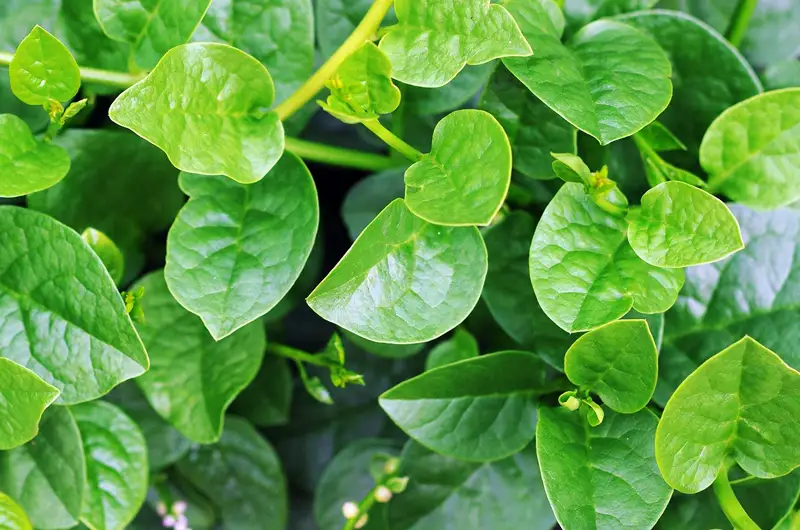
Malabar Spinach Varieties
There are two main types of Malabar Spinach you’ll commonly encounter:
Green Malabar Spinach (Basella alba)
- This variety features lush green leaves and green stems. It’s the most common type and has a mild, slightly peppery flavor.
Red Malabar Spinach (Basella rubra)
- Distinguished by its striking reddish-purple stems and leaf veins contrasting with green leaves, this variety is often grown for its ornamental value as well as its edible qualities. Its flavor is very similar to the green variety. Some growers report Basella rubra might be slightly more vigorous.
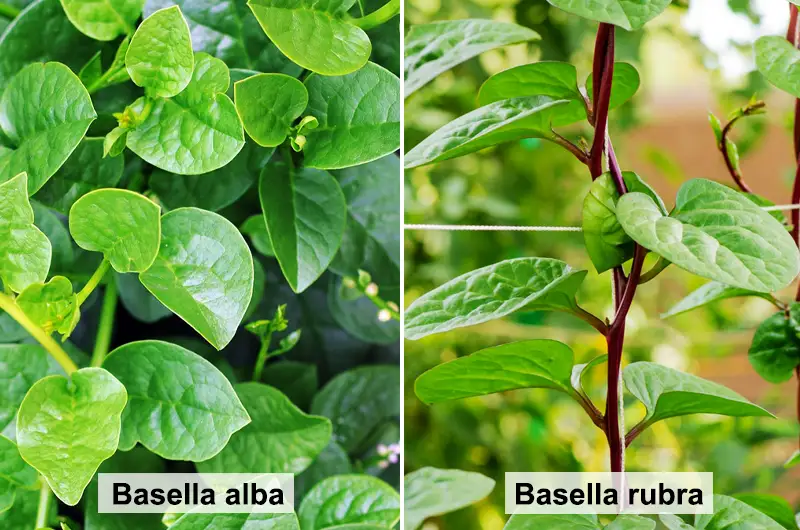
Origins and Global Use of Malabar Spinach
Malabar Spinach is believed to have originated in Tropical Asia, possibly India or Indonesia. It has a long history of cultivation and use in various cuisines across the continent. Today, it is widely cultivated and consumed in many tropical and subtropical countries, including:
- Asia: India, Sri Lanka, Bangladesh, Philippines, Malaysia, Vietnam, China, Indonesia, Japan (Okinawa)
- Africa: Many parts of tropical Africa
- Americas: Increasingly popular in the warmer regions of the United States (especially the South), the Caribbean, and parts of South America.
It’s valued not only for its taste and nutritional content but also for its resilience in hot climates where other leafy greens struggle.
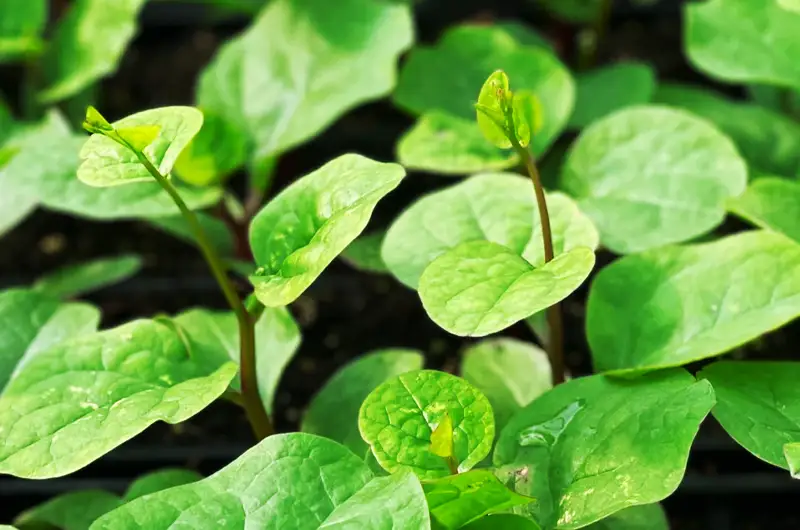
Ideal Climate Conditions for Growing Malabar Spinach
Malabar Spinach is fundamentally a tropical and subtropical plant. Here’s how its suitability breaks down:
- Tropical/Subtropical Climates: Thrives. It loves heat (ideally temperatures between 25-32°C / 77-90°F), high humidity, and ample rainfall or irrigation. It grows as a perennial vine in frost-free zones.
- Temperate Climates: Can be grown successfully as a warm-season annual. It needs to be planted after all danger of frost has passed and soil temperatures have warmed up (consistently above 18°C / 65°F). Growth will slow significantly in cooler weather and the plant will die with the first frost.
- Cold Climates: Generally unsuitable for outdoor cultivation unless grown in a greenhouse or during a very short, warm summer window. Starting seeds indoors several weeks before the last frost is essential.
How to Plant Malabar Spinach
You can start Malabar Spinach from seeds or stem cuttings. It requires full sun (at least 6 hours daily) and fertile, well-draining soil rich in organic matter.
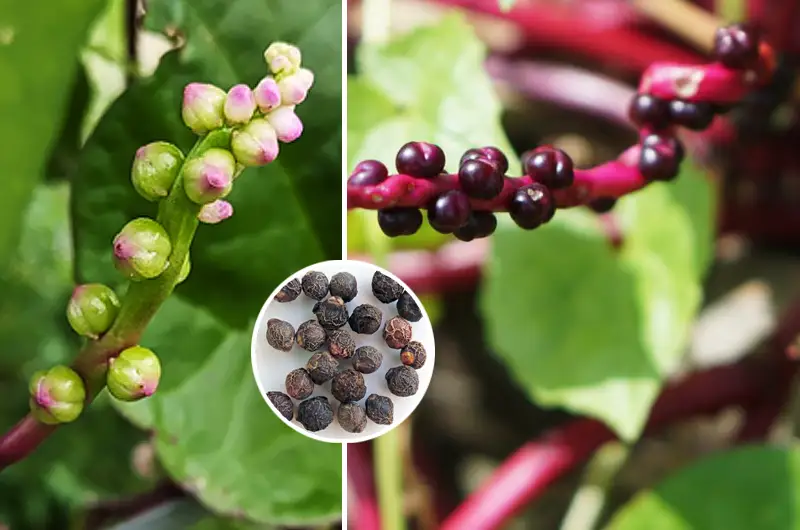
Starting Malabar Spinach from Seeds
- The seeds have a hard coat. To improve germination, scarify them lightly with sandpaper or soak them in water overnight before planting. Sow seeds about 1/4 to 1/2 inch deep directly into the garden after the soil is warm, or start indoors 4-6 weeks before the last expected frost. Space plants or thin seedlings to about 1 foot apart.
Starting Malabar Spinach from Cuttings
- Malabar Spinach roots easily from stem cuttings. Take 6-8 inch cuttings from healthy stems, remove the lower leaves, and place the cuttings in water until roots develop, or plant them directly into moist potting soil or garden soil. Keep them consistently moist until established.
Choosing the Right Location
- Select the sunniest spot available. Ensure the soil is rich and drains well to prevent root rot. Amend the soil with compost before planting.
Providing Support for Your Malabar Spinach
- As a vine, Malabar Spinach needs support to climb. Provide a sturdy trellis, fence, netting, or stakes at planting time. Without support, it will sprawl along the ground, which can lead to disease issues and make harvesting more difficult.
Growing Malabar Spinach: Care and Maintenance
Once established, Malabar Spinach care is relatively straightforward, especially in its preferred warm conditions.
Watering Needs
- Keep the soil consistently moist, especially during hot, dry periods. Water deeply when the top inch of soil feels dry. Avoid waterlogged conditions. Mulching can help retain soil moisture.
Fertilizing Malabar Spinach
- Feed your plants every 3-4 weeks during the growing season with a balanced liquid fertilizer or a side dressing of compost or well-rotted manure. High nitrogen fertilizer can encourage more leafy growth.
Harvesting Malabar Spinach
- You can begin harvesting leaves and tender young stem tips (the top 4-6 inches) about 6-8 weeks after planting, or once the vine is established and growing vigorously. Regular harvesting encourages bushier growth and more production. Use scissors or pinch off the tips. Both leaves and young stems are edible.
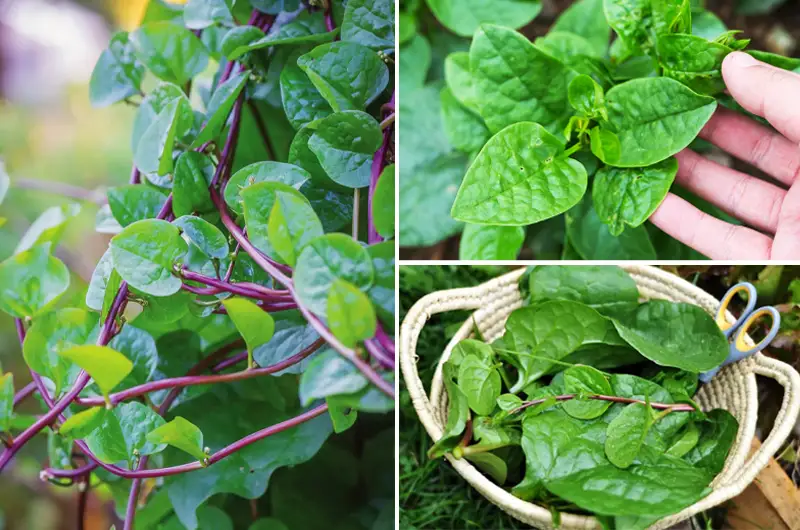
Pests and Diseases
- Malabar Spinach is relatively resistant to pests and diseases, especially compared to true spinach. Occasionally, aphids or leaf-eating beetles might appear. Fungal leaf spots can occur in very damp conditions with poor air circulation, so proper spacing and support are beneficial.
A Resilient and Rewarding Green
Growing Malabar Spinach is an excellent way to ensure a steady supply of nutritious leafy greens throughout the hottest months of summer when traditional greens fail. Its ease of care, rapid growth, and versatility in the kitchen make it a valuable addition to warm-climate gardens and a rewarding annual crop in temperate zones.
Read More about Malabar Spinach: Malabar Spinach Benefits: Nutrition, Uses and More
Latest Posts:


